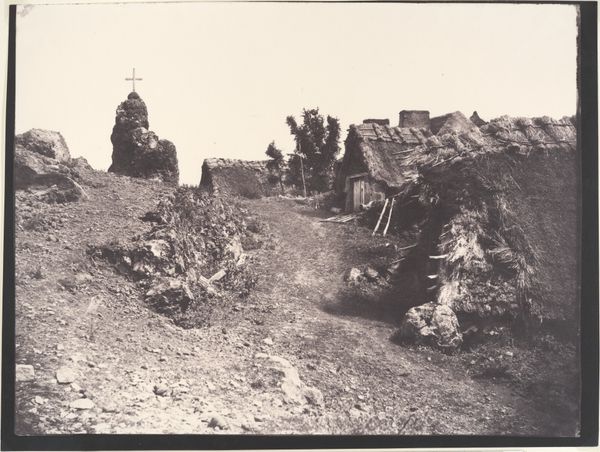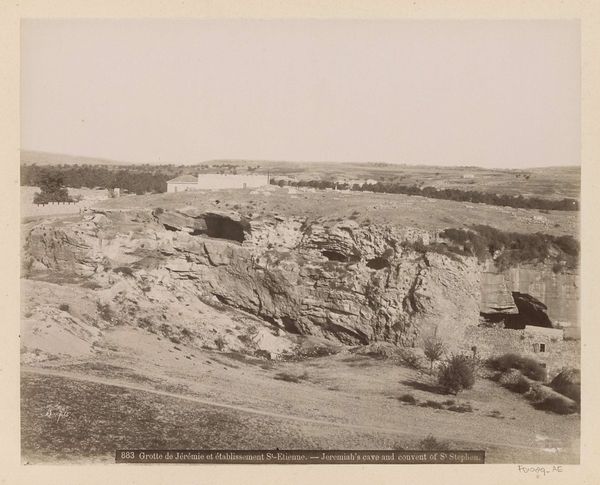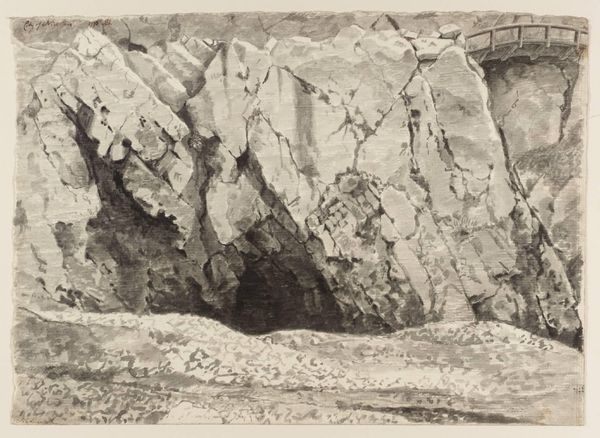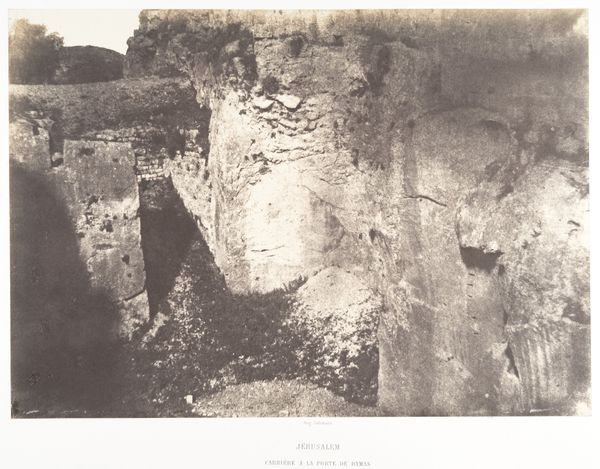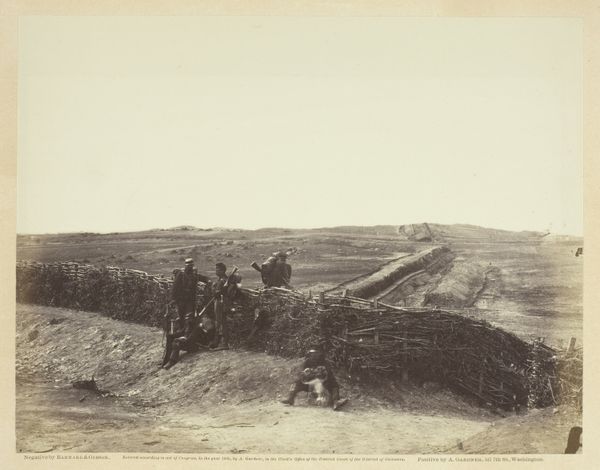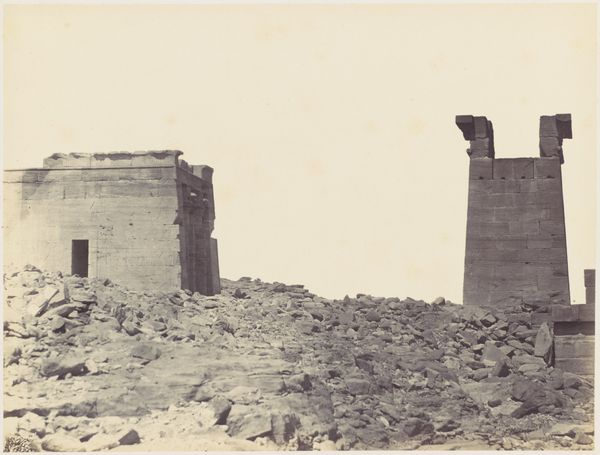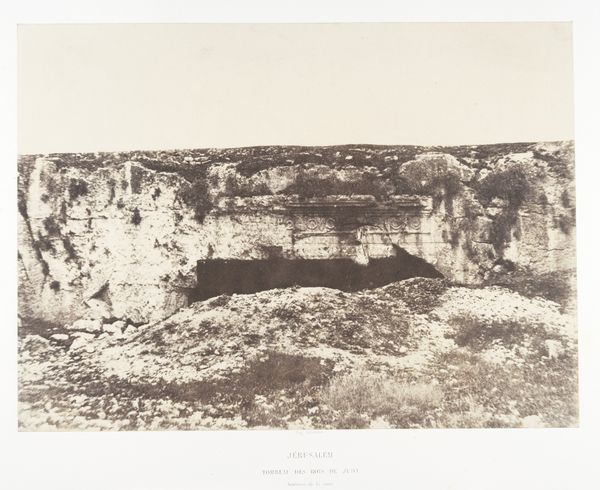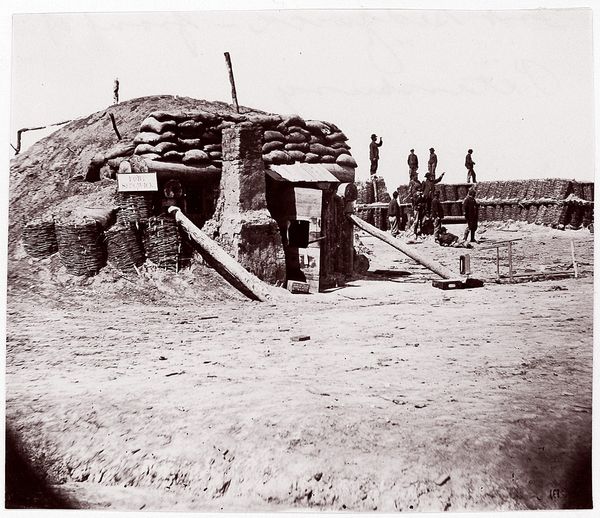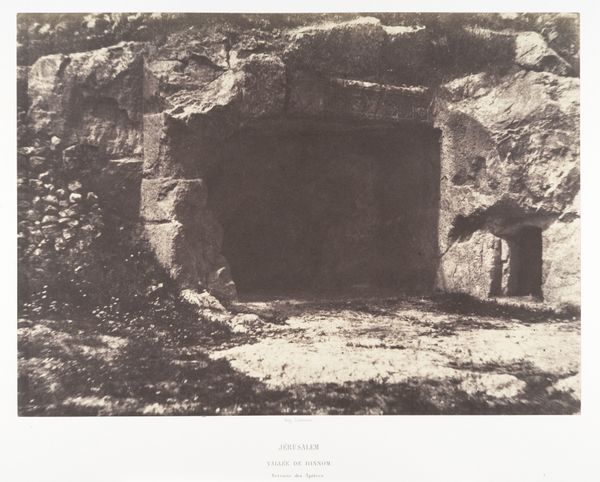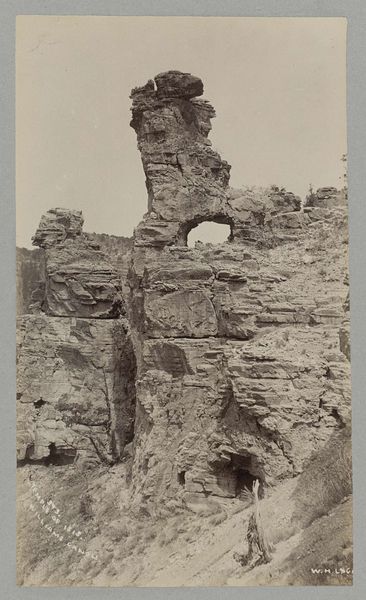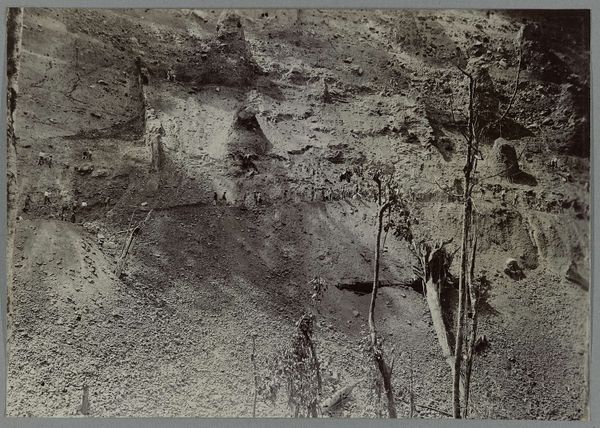![[The "Mine," Petersburg, Virginia] by Timothy O'Sullivan](/_next/image?url=https%3A%2F%2Fd2w8kbdekdi1gv.cloudfront.net%2FeyJidWNrZXQiOiAiYXJ0ZXJhLWltYWdlcy1idWNrZXQiLCAia2V5IjogImFydHdvcmtzLzg4NTkzZDdiLTE5NjEtNDgzYi1hZjg1LTQ1Y2NiOTRlMmU3ZC84ODU5M2Q3Yi0xOTYxLTQ4M2ItYWY4NS00NWNjYjk0ZTJlN2RfZnVsbC5qcGciLCAiZWRpdHMiOiB7InJlc2l6ZSI6IHsid2lkdGgiOiAxOTIwLCAiaGVpZ2h0IjogMTkyMCwgImZpdCI6ICJpbnNpZGUifX19&w=3840&q=75)
print, photography, gelatin-silver-print
# print
#
war
#
landscape
#
photography
#
gelatin-silver-print
#
history-painting
Dimensions: 16 x 20.4 cm (6 5/16 x 8 1/16 in. )
Copyright: Public Domain
Curator: Gazing at this gelatin silver print, a photograph from 1864 by Timothy O'Sullivan titled "[The 'Mine,' Petersburg, Virginia]," I am struck, immediately and strangely, by a feeling of sublime dread, you know? As though standing on the precipice of a very quiet apocalypse. Editor: Quiet is right. O'Sullivan documented the brutal reality of war, and you can almost feel the earth trembling, the labor, the intense material transformation inherent in warfare and landscape. The photographic print is, after all, both artifact and index, product of human endeavor, social structure, and military aggression. Curator: Exactly. It is history laid bare, isn't it? Those rough-hewn palisades of timber, rising starkly above the pockmarked earth—almost like desperate teeth clenched against the sky! They hint at a primitive, brutal ingenuity. I feel like I’m staring into the mouth of hell. Editor: It's the stark contrast between those hand-cut wooden reinforcements and the crude earthworks, really, that screams about the resources, both human and natural, thrown at the siege. And what it conceals beneath… we get this haunting portrait of violence rendered as excavation. The earth remembers, and so do these images made with earth and silver. Curator: The "Mine" refers to the explosive tunnel dug beneath Confederate lines, a failed attempt to break the siege. The landscape itself feels wounded, doesn’t it? Like a violated body. There’s an almost surreal quality to the utter stillness, knowing what unimaginable violence occurred here. It’s chillingly beautiful. Editor: It reminds me of all the manual labor from which photographic materials arose in the nineteenth century, labor often elided. Think of the silver miners whose toil makes such images possible. It adds another layer of historical irony: that human efforts to alter the land, even to destroy, rely on the resources of that very land, mined by vulnerable hands. Curator: Indeed. The photograph offers a disquieting testament to destruction's enduring echo—it haunts us across time, reminding us of our fragile impermanence. It whispers tales of grand yet failed designs that still resonate within the very earth beneath our feet. Editor: Agreed. Thinking about the environmental costs of conflict as well as the historical weight, the photograph serves as a reminder. When considering any work we must question not only 'What did it portray?', but rather also consider, 'How was it made?' and 'What material conditions did it come out of?'
Comments
No comments
Be the first to comment and join the conversation on the ultimate creative platform.

